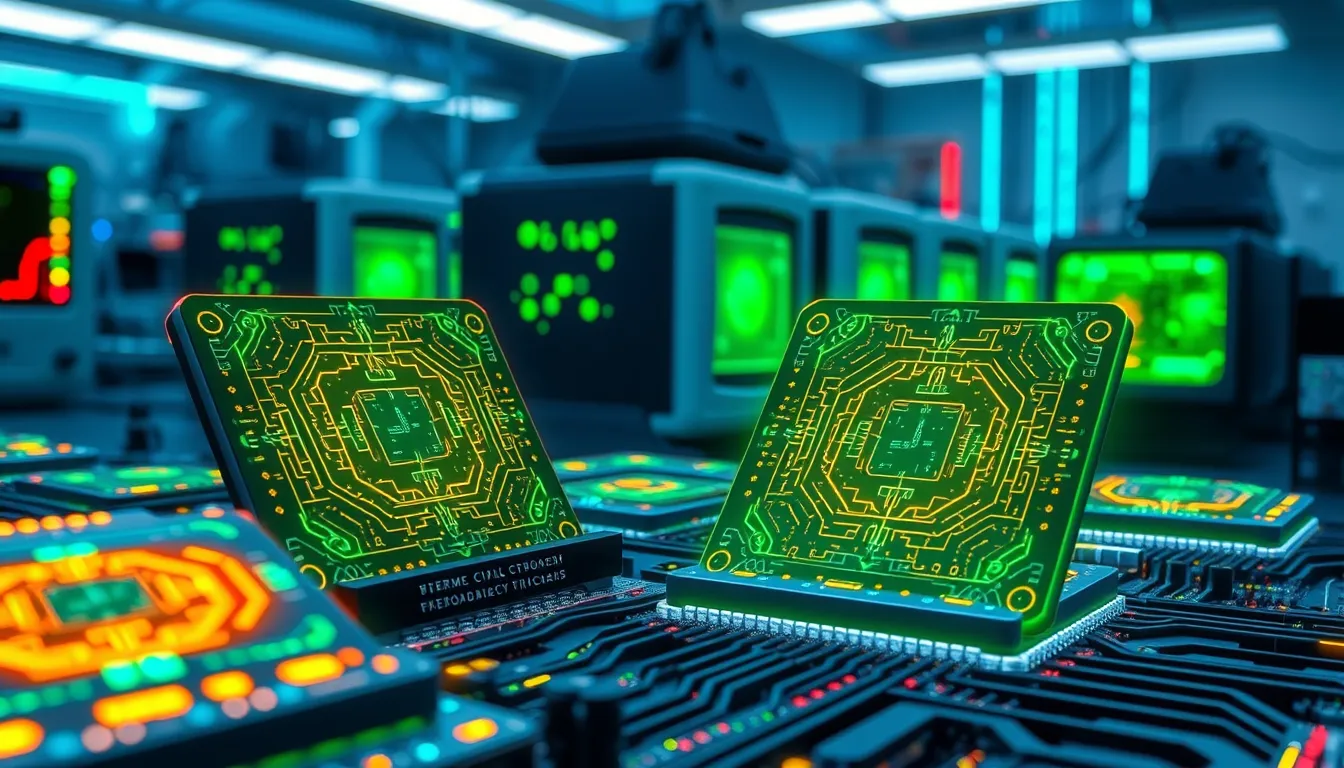Now Reading: Neurodiverse AI Development: Leading Inclusive Innovation
-
01
Neurodiverse AI Development: Leading Inclusive Innovation
Neurodiverse AI Development: Leading Inclusive Innovation

Neurodiverse AI Development: Leading Inclusive Innovation
Introduction
Neurodiverse AI development is rapidly reshaping the technological landscape by integrating a variety of cognitive styles into the framework of artificial intelligence. This innovative approach not only spurs creativity but also ensures that AI systems are ethically designed and inclusively structured. By valuing diverse mental models—from analytical to creative—developers are driving sustainable advancements that meet the nuanced needs of a global society. In today’s rapidly evolving digital age, the inclusion of diverse perspectives in AI development is proving crucial in fostering solutions that are robust, adaptive, and truly representative.
The concept of neurodiversity acknowledges that differences in cognitive functioning—such as those found in autism, ADHD, dyslexia, and other neurological variances—are natural variations of human diversity. Rather than viewing these differences as deficits, neurodiverse AI development recognizes them as unique assets that can enhance problem-solving, critical thinking, and creative innovation. By incorporating insights from individuals with diverse neurology, this approach challenges the traditional one-size-fits-all model of AI and opens up new avenues for ethical and effective technology advancement.
The Impact of Diverse Cognitive Styles in AI
Embracing neurodiversity in technology has emerged as an essential strategy to enhance the performance of AI systems. Diverse cognitive styles offer several key advantages:
- Enhanced Creativity and Problem-Solving: When development teams incorporate various cognitive perspectives, they can approach problems from multiple angles. This multiplicity of thought often leads to breakthrough ideas and solutions that a homogenous group might overlook. For instance, algorithms designed by teams with neurodiverse backgrounds have been shown to approach data analysis in ways that uncover previously unrecognized patterns, leading to innovative applications in fields such as healthcare, finance, and education.
- Robust and Ethical AI Systems: Neurodiverse teams bring a broader ethical perspective to AI development. Their unique viewpoints can help identify potential biases and oversights in AI models before they reach mass deployment. This proactive identification of ethical concerns is crucial in ensuring that AI systems do not inadvertently perpetuate existing inequalities. By integrating diverse moral and ethical considerations into the design phase, developers can craft AI tools that are not only intelligent but also just and fair.
- More Inclusive User Experiences: When AI systems are designed with input from a variety of cognitive styles, the result is often more adaptable technology that caters to a wider range of user needs. Whether it is through adaptive user interfaces or customizable interaction models, inclusive AI development ensures that technology remains accessible to individuals of all backgrounds and abilities.
These advantages highlight how the infusion of diverse perspectives leads to a richer and more resilient AI ecosystem. For example, research has shown that teams that actively promote neurodiversity tend to introduce more radical innovations, reducing the risk of groupthink and stagnation in creative processes. This democratization of ideas is proving vital in building systems that are both technically sound and socially responsible.
Benefits of Inclusive Innovation
- Breakthrough Ideas Beyond Conventional Methods: Traditional AI development often relies on standardized models and uniform thought processes. In contrast, neurodiverse teams are less likely to be confined by conventional methodologies. Their varied approaches to problem-solving often lead to breakthrough ideas that challenge the status quo. This fresh perspective not only spurs innovation but also ensures that the technology remains resilient in the face of dynamic challenges.
- Stronger Emphasis on Ethical AI Systems: With an increased focus on inclusive practices, AI development is shifting from mere technical optimization to creating systems that prioritize user safety, fairness, and accountability. Neurodiverse input contributes to a broader ethical review during the design and implementation phases. This comprehensive approach results in AI technologies that can better anticipate and mitigate unintended consequences, such as algorithmic bias or privacy breaches.
- Improved Effectiveness and Inclusivity in Technology Design: Inclusive innovation goes hand in hand with accessibility. By integrating a wide array of insights from neurodiverse contributors, teams can design technology that is adaptable and responsive to a range of user requirements. Whether through enhanced usability features or adaptive learning capabilities, inclusive design ensures that AI applications are practical, effective, and user-friendly. This methodology not only promotes accessibility but also increases the overall effectiveness of technological solutions in real-world applications.
In practice, companies that adopt inclusive AI development practices have reported significant improvements in the quality and resilience of their products. For instance, by leveraging the distinct problem-solving approaches of neurodiverse team members, some tech firms have successfully developed AI systems that are less prone to error and better at anticipating user needs. These improvements are critical in high-stakes environments such as autonomous driving, personalized medicine, and financial forecasting, where precision and accountability are paramount.
Moreover, the benefits of inclusive innovation extend to organizational culture. Teams that value neurodiversity often enjoy a more collaborative and supportive working environment. The open exchange of ideas fosters creativity not only in product development but also in internal processes, leading to a more dynamic and agile organizational structure. Such environments tend to attract top talent who are eager to work in places that both respect and harness the power of cognitive diversity.
Frankie Woodhead AI Perspective
Industry leaders have been vocal about the transformative potential of neurodiverse AI development. Frankie Woodhead, a prominent figure in the tech community and a leading voice at Thrive, champions the integration of diverse cognitive viewpoints into every stage of AI innovation. Woodhead emphasizes that the strength of AI lies in its ability to learn from a wide spectrum of human experiences and insights. According to his perspective, the deliberate inclusion of neurodiverse thought processes can significantly strengthen the capacity for creativity and innovation in AI systems.
- Embracing Unconventional Thinking: Woodhead believes that unconventional thinking drives innovation. By incorporating non-traditional problem-solving strategies, neurodiverse teams can unlock fresh ideas and approaches that are often neglected by uniform groups. This not only leads to the creation of more dynamic AI models but also fosters a culture of continuous learning and adaptation.
- Prioritizing Ethical Standards: For Woodhead, ethics are the cornerstone of successful AI development. By including neurodiverse perspectives, organizations are better equipped to foresee and manage ethical challenges. This proactive stance on ethical issues ensures that AI systems are created with a deep sense of responsibility toward society.
- Fostering Collaborative Environments: Collaboration is key in translating neurodiverse ideas into actionable outcomes. Woodhead advocates for environments where team members can freely express their unique insights and work together to merge different perspectives into a singular, innovative vision. This collaborative dynamic not only enhances the overall quality of AI systems but also cultivates a workplace environment that values and rewards innovation.
His insights are supported by numerous case studies where neurodiverse teams have successfully navigated complex challenges, resulting in AI solutions that are both technically advanced and deeply integrated with ethical considerations. Woodhead’s perspective reinforces the idea that the future of AI lies in a balanced integration of technical aptitude and human-centric innovation.
Expanding the Scope: Future Directions in Neurodiverse AI Development
As we look toward the future, the integration of neurodiverse perspectives into AI development is poised to expand even further. Researchers, developers, and industry leaders are beginning to explore new methodologies that leverage diverse cognitive styles from the outset of the innovation process. Some emerging trends and opportunities include:
- Interdisciplinary Collaboration: By partnering with experts from fields such as cognitive science, neuropsychology, and sociology, AI development teams can gain deeper insights into how different cognitive profiles interact with technology. This interdisciplinary approach will likely lead to more refined and adaptive AI systems.
- Customized Learning and Adaptation: Future AI systems could incorporate algorithms designed to adapt based on the varied cognitive inputs from neurodiverse users. Such systems would be capable of fine-tuning their responses and functionalities to better align with diverse user needs, ultimately leading to more personalized and effective outcomes.
- Inclusive Policy and Ethical Frameworks: As the impact of neurodiverse AI development becomes more evident, there will be a growing need for policies that support inclusive practices in technology. These frameworks will help ensure that the benefits of AI are equitably distributed and that ethical standards keep pace with rapid technological advancements.
- Real-World Impact Studies: Ongoing studies and real-world applications of neurodiverse AI development will continue to provide valuable data on its effectiveness. These studies are critical for validating the benefits of inclusive innovation and refining best practices for implementation across various industries.
The trajectory of AI innovation is increasingly intertwined with efforts to incorporate diverse cognitive styles. By broadening the pool of ideas and challenging standard methodologies, neurodiverse AI development is setting new benchmarks for both technical excellence and ethical responsibility.
Conclusion
In conclusion, neurodiverse AI development is far more than a fleeting trend; it is a transformative movement reshaping the entire field of artificial intelligence. By harnessing a wide range of cognitive inputs, the industry is not only achieving higher levels of creativity and innovation but is also paving the way for ethical, inclusive technological breakthroughs. As demonstrated throughout this discussion, integrating diverse perspectives leads to breakthrough ideas, robust AI systems, and improved user experiences.
Looking ahead, the continued emphasis on neurodiverse contributions promises to further democratize technology. This evolution ensures that AI systems become increasingly adaptable, ethical, and responsive to the complex needs of modern society. In embracing these varied cognitive insights, developers and industry leaders are not just creating smarter machines—they are crafting a future where technology and human ingenuity work hand in hand.
For those interested in further exploring the intersection of neurodiversity and artificial intelligence, numerous resources and research studies are available. Internal links and additional reading on related topics, such as neurodiversity in technology and inclusive AI innovation, offer deeper insights and practical examples of these principles in action. The continued collaboration between diverse minds and technological advancement is set to drive a new era of ethical and creative breakthroughs, ensuring that AI remains a tool for positive transformation in today’s dynamic world.

























